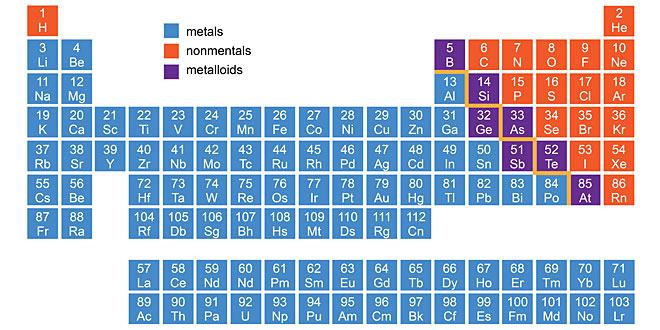Question: Explain, why calcium metal after reacting with water starts floating on its surface. Write the chemical equation.
Answer: Calcium starts floating because the bubbles of hydrogen gas formed stick to the surface of the metal.
Ca(s) + 2H2O(l) → Ca(OH)2(aq) + H2(g)
(Calcium) (water) (Calcium hydroxide) (Bubbles of hydrogen gas)
Question: When a metal X is treated with cold water, it gives a basic salt Y with molecular formula XOH (Molecular mass = 40) and liberates a gas Z which easily catches fire. Identify X, Y, Z.
Answer:
- X is sodium or potassium metal.
- Y is sodium hydroxide or potassium hydroxide.
- Z is hydrogen gas.
Question: Name the following:
(1). A metal which is preserved in kerosene.
(2). A lustrous colored non-metal.
(3). A metal which can melt while kept on palm.
(4). A metal which is a poor conductor of heat.
Answer:
- Sodium
- Iodine
- Gallium or caesium
- Lead or mercury
Question: Why do ionic compounds have high melting points? State reason.
Answer: In ionic compounds, cations are held together by strong electrostatic forces of attraction. Hence, large amount of energy is required to overcome these forces.
Question: Write chemical equations for the reactions taking place when:
(1) iron reacts with steam.
(2) magnesium (mg) reacts with dil. HCl.
(3) copper is heated in air.
Answer:
- 3Fe(s) + 4H2O(g) → Fe3O4(s) + 4H2(g)
- Mg + 2HCl → MgCl2 + H2
Magnesium Magnesium chloride - 2Cu(s) + O2(g) → 2CuO
Copper II oxide
Question: You are given samples of three metals – sodium, magnesium and copper. Suggest any two activities to arrange them on order of their decreasing reactivity.
Answer:
Activity 1:
Sodium reacts with cold water to form sodium hydroxide and hydrogen gas.
2Na(s) + 2H2O(l) → 2NaOH(aq) + H2(g)
Magnesium does not react with cold water but with hot water to form magnesium hydroxide and hydrogen gas.
Mg + 2H2O → Mg(OH)2 + H2
(Hot)
Hence, sodium is more reactive than magnesium.
Activity 2:
Mg + CuSO4 → MgSO4 + Cu
Cu + MgSO4 → No reaction
So magnesium is more reactive than copper. Concluding from activity 1 and activity 2, Na > Mg > Cu.
Question: Name two metals in each of the following cases:
(1). Metals that are stored in kerosene.
(2). Metals that are alloyed with iron to make stainless steel.
(3). Metals which are highly malleable and ductile.
Answer:
- Sodium and potassium
- Nickel and chromium
- Gold and silver
Question: Write chemical equations for the reaction taking place when:
(i). Iron is strongly heated in air.
(ii). lead carbonate is calcined.
(iii). chromium oxide (Cr2O3) is heated with aluminium powder.
Answer:
(i). Iron does not burn in air even on strong heating. At high temperature, it combines with oxygen of the air to form Fe3O4.
![]()
(ii). Calcination of lead carbonate. Heating the ore in absence of air.
![]()
(iii) Cr2O3(s) + Al(s) → Al2O3(s) + 2Cr(l)
Chromium is obtained in molten form.
Question: A, B and C are three elements which undergo chemical reactions according to the following equations:
A2O3 + 2B → B2O3 + 2A
3CSO4 + 2B → B2(SO4)3 + 3C
3CO + 2A → A2O3 + 3C
(1) Which element is the most reactive?
(2) Which element is the least reactive?
(3) What is the type of reactions listed above?
Answer:
- Most reactive element is ‘B’ as it has replaced both ‘A’ and ‘C’ from their compounds.
- Element ‘C’ is least reactive as it has been replaced by both ‘A’ and ‘B’.
- Displacement reaction.
Question: (1). Arrange the following metals in the order of their decreasing activities:
Aluminium, Gold, Sodium, Copper.
(2). Give reaction of aluminium powder with manganese dioxide on heating.
Answer:
- Sodium > Aluminium > Copper > Gold
- 4 Al(s) + 3MnO2 → 3Mn(l) + 2Al2O3(s)
 Class Notes NCERT Solutions for CBSE Students
Class Notes NCERT Solutions for CBSE Students





